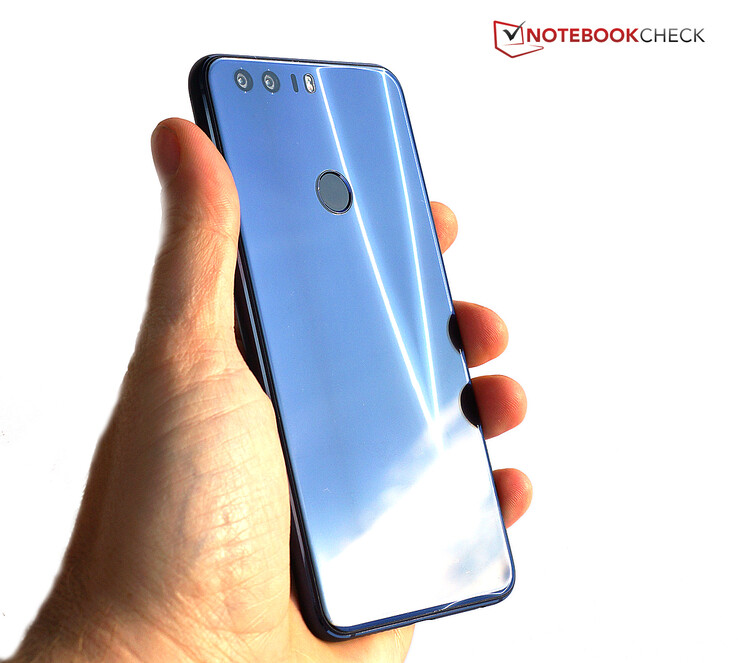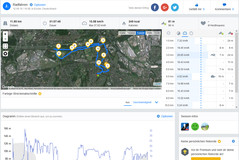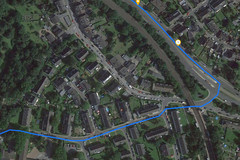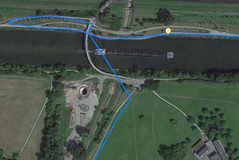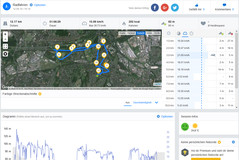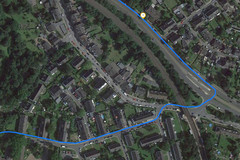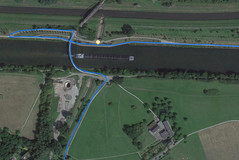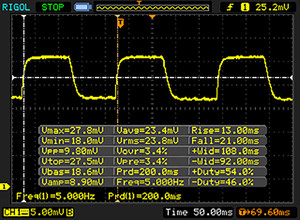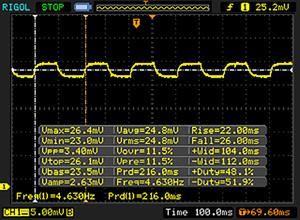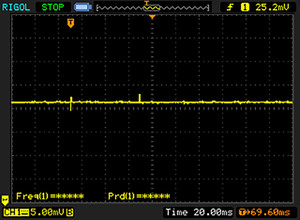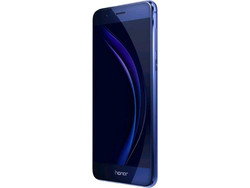荣耀 8 智能手机简短评测
» Notebookcheck多媒体笔记本电脑Top 10排名
» Notebookcheck游戏笔记本电脑Top 10排名
» Notebookcheck低价办公/商务笔记本电脑Top 10排名
» Notebookcheck高端办公/商务笔记本电脑Top 10排名
» Notebookcheck工作站笔记本电脑Top 10排名
» Notebookcheck亚笔记本电脑Top 10排名
» Notebookcheck超级本产品Top 10排名
» Notebookcheck变形本产品Top 10排名
» Notebookcheck平板电脑Top 10排名
» Notebookcheck智能手机Top 10排名
» Notebookcheck评测过最出色的笔记本电脑屏幕
» Notebookcheck售价500欧元以下笔记本电脑Top 10排名
» Notebookcheck售价300欧元以下笔记本电脑Top 10排名
Size Comparison
| Networking | |
| iperf Server (receive) TCP 1 m | |
| OnePlus 3 | |
| Honor 8 | |
| Huawei P9 | |
| Sony Xperia XA | |
| iperf Client (transmit) TCP 1 m | |
| OnePlus 3 | |
| Huawei P9 | |
| Honor 8 | |
| Sony Xperia XA | |
| |||||||||||||||||||||||||
Brightness Distribution: 93 %
Center on Battery: 451 cd/m²
Contrast: 1128:1 (Black: 0.4 cd/m²)
ΔE Color 5.4 | 0.5-29.43 Ø5
ΔE Greyscale 6.7 | 0.57-98 Ø5.3
Gamma: 2.33
| Honor 8 IPS, 1920x1080, 5.20 | Google Nexus 5X IPS, 1920x1080, 5.20 | OnePlus 3 Optic-AMOLED, 1920x1080, 5.50 | Sony Xperia XA IPS, 1280x720, 5.00 | Huawei P9 IPS-NEO, JDI, 1920x1080, 5.20 | |
|---|---|---|---|---|---|
| Screen | 26% | 6% | -14% | 21% | |
| Brightness middle | 451 | 503 12% | 419 -7% | 518 15% | 582 29% |
| Brightness | 443 | 498 12% | 431 -3% | 475 7% | 563 27% |
| Brightness Distribution | 93 | 97 4% | 84 -10% | 81 -13% | 91 -2% |
| Black Level * | 0.4 | 0.38 5% | 0.61 -53% | 0.38 5% | |
| Contrast | 1128 | 1324 17% | 849 -25% | 1532 36% | |
| Colorchecker dE 2000 * | 5.4 | 2.09 61% | 4.1 24% | 6.8 -26% | 4.4 19% |
| Colorchecker dE 2000 max. * | 9.9 | 12 -21% | 11.4 -15% | 7.4 25% | |
| Greyscale dE 2000 * | 6.7 | 2.12 68% | 3.3 51% | 7 -4% | 4.8 28% |
| Gamma | 2.33 94% | 2.27 97% | 2.1 105% | 2.35 94% | 2.2 100% |
| CCT | 8262 79% | 6621 98% | 6550 99% | 8151 80% | 6175 105% |
| Color Space (Percent of AdobeRGB 1998) | 89.38 | 77.78 | |||
| Color Space (Percent of sRGB) | 100 | 99.44 |
* ... smaller is better
Display Response Times
| ↔ Response Time Black to White | ||
|---|---|---|
| 34 ms ... rise ↗ and fall ↘ combined | ↗ 13 ms rise | |
| ↘ 21 ms fall | ||
| The screen shows slow response rates in our tests and will be unsatisfactory for gamers. In comparison, all tested devices range from 0.1 (minimum) to 240 (maximum) ms. » 89 % of all devices are better. This means that the measured response time is worse than the average of all tested devices (21.5 ms). | ||
| ↔ Response Time 50% Grey to 80% Grey | ||
| 48 ms ... rise ↗ and fall ↘ combined | ↗ 22 ms rise | |
| ↘ 26 ms fall | ||
| The screen shows slow response rates in our tests and will be unsatisfactory for gamers. In comparison, all tested devices range from 0.2 (minimum) to 636 (maximum) ms. » 80 % of all devices are better. This means that the measured response time is worse than the average of all tested devices (33.7 ms). | ||
Screen Flickering / PWM (Pulse-Width Modulation)
| Screen flickering / PWM not detected | |||
In comparison: 53 % of all tested devices do not use PWM to dim the display. If PWM was detected, an average of 17900 (minimum: 5 - maximum: 3846000) Hz was measured. | |||
| AnTuTu v6 - Total Score (sort by value) | |
| Honor 8 | |
| OnePlus 3 | |
| Sony Xperia XA | |
| Huawei P9 | |
| 3DMark | |
| 1280x720 offscreen Ice Storm Unlimited Score (sort by value) | |
| Honor 8 | |
| Google Nexus 5X | |
| OnePlus 3 | |
| Sony Xperia XA | |
| Huawei P9 | |
| 1280x720 offscreen Ice Storm Unlimited Graphics Score (sort by value) | |
| Honor 8 | |
| Google Nexus 5X | |
| OnePlus 3 | |
| Sony Xperia XA | |
| Huawei P9 | |
| 1280x720 offscreen Ice Storm Unlimited Physics (sort by value) | |
| Honor 8 | |
| Google Nexus 5X | |
| OnePlus 3 | |
| Sony Xperia XA | |
| Huawei P9 | |
| 2560x1440 Sling Shot OpenGL ES 3.0 (sort by value) | |
| Honor 8 | |
| Google Nexus 5X | |
| OnePlus 3 | |
| Sony Xperia XA | |
| Huawei P9 | |
| 2560x1440 Sling Shot OpenGL ES 3.0 Graphics (sort by value) | |
| Honor 8 | |
| Google Nexus 5X | |
| OnePlus 3 | |
| Sony Xperia XA | |
| Huawei P9 | |
| 2560x1440 Sling Shot OpenGL ES 3.0 Physics (sort by value) | |
| Honor 8 | |
| Google Nexus 5X | |
| OnePlus 3 | |
| Sony Xperia XA | |
| Huawei P9 | |
| GFXBench (DX / GLBenchmark) 2.7 | |
| T-Rex Onscreen (sort by value) | |
| Honor 8 | |
| Google Nexus 5X | |
| OnePlus 3 | |
| Sony Xperia XA | |
| Huawei P9 | |
| 1920x1080 T-Rex Offscreen (sort by value) | |
| Honor 8 | |
| Google Nexus 5X | |
| OnePlus 3 | |
| Sony Xperia XA | |
| Huawei P9 | |
| GFXBench 3.0 | |
| on screen Manhattan Onscreen OGL (sort by value) | |
| Honor 8 | |
| Google Nexus 5X | |
| OnePlus 3 | |
| Sony Xperia XA | |
| Huawei P9 | |
| 1920x1080 1080p Manhattan Offscreen (sort by value) | |
| Honor 8 | |
| Google Nexus 5X | |
| OnePlus 3 | |
| Sony Xperia XA | |
| Huawei P9 | |
| GFXBench 3.1 | |
| on screen Manhattan ES 3.1 Onscreen (sort by value) | |
| Honor 8 | |
| OnePlus 3 | |
| Sony Xperia XA | |
| Huawei P9 | |
| 1920x1080 Manhattan ES 3.1 Offscreen (sort by value) | |
| Honor 8 | |
| OnePlus 3 | |
| Sony Xperia XA | |
| Huawei P9 | |
| PCMark for Android - Work performance score (sort by value) | |
| Honor 8 | |
| Google Nexus 5X | |
| OnePlus 3 | |
| Sony Xperia XA | |
| Huawei P9 | |
| Geekbench 4.0 | |
| 64 Bit Single-Core Score (sort by value) | |
| Honor 8 | |
| OnePlus 3 | |
| Huawei P9 | |
| 64 Bit Multi-Core Score (sort by value) | |
| Honor 8 | |
| OnePlus 3 | |
| Huawei P9 | |
| Compute RenderScript Score (sort by value) | |
| Honor 8 | |
| OnePlus 3 | |
| Huawei P9 | |
| Mozilla Kraken 1.1 - Total (sort by value) | |
| Honor 8 | |
| Google Nexus 5X | |
| OnePlus 3 | |
| Sony Xperia XA | |
| Huawei P9 | |
| Octane V2 - Total Score (sort by value) | |
| Honor 8 | |
| Google Nexus 5X | |
| OnePlus 3 | |
| Sony Xperia XA | |
| Huawei P9 | |
| WebXPRT 2015 - Overall (sort by value) | |
| Honor 8 | |
| Google Nexus 5X | |
| OnePlus 3 | |
| Sony Xperia XA | |
| Huawei P9 | |
| JetStream 1.1 - Total Score (sort by value) | |
| Honor 8 | |
| Google Nexus 5X | |
| OnePlus 3 | |
| Sony Xperia XA | |
| Huawei P9 | |
* ... smaller is better
| AndroBench 3-5 | |
| Sequential Read 256KB (sort by value) | |
| Honor 8 | |
| Google Nexus 5X | |
| OnePlus 3 | |
| Sony Xperia XA | |
| Huawei P9 | |
| Sequential Write 256KB (sort by value) | |
| Honor 8 | |
| Google Nexus 5X | |
| OnePlus 3 | |
| Sony Xperia XA | |
| Huawei P9 | |
| Random Read 4KB (sort by value) | |
| Honor 8 | |
| Google Nexus 5X | |
| OnePlus 3 | |
| Sony Xperia XA | |
| Huawei P9 | |
| Random Write 4KB (sort by value) | |
| Honor 8 | |
| Google Nexus 5X | |
| OnePlus 3 | |
| Sony Xperia XA | |
| Huawei P9 | |
| Sequential Read 256KB SDCard (sort by value) | |
| Honor 8 | |
| Sony Xperia XA | |
| Huawei P9 | |
| Sequential Write 256KB SDCard (sort by value) | |
| Honor 8 | |
| Sony Xperia XA | |
| Huawei P9 | |
| Asphalt 8: Airborne | |||
| Settings | Value | ||
| high | 30 fps | ||
| very low | 30 fps | ||
| Dead Trigger 2 | |||
| Settings | Value | ||
| high | 30 fps | ||
(±) The maximum temperature on the upper side is 40.6 °C / 105 F, compared to the average of 35 °C / 95 F, ranging from 21.9 to 56 °C for the class Smartphone.
(+) The bottom heats up to a maximum of 39.9 °C / 104 F, compared to the average of 33.8 °C / 93 F
(±) In idle usage, the average temperature for the upper side is 36.4 °C / 98 F, compared to the device average of 32.7 °C / 91 F.
Honor 8 audio analysis
(+) | speakers can play relatively loud (84.7 dB)
Bass 100 - 315 Hz
(-) | nearly no bass - on average 24% lower than median
(±) | linearity of bass is average (12.1% delta to prev. frequency)
Mids 400 - 2000 Hz
(+) | balanced mids - only 4.1% away from median
(+) | mids are linear (5.3% delta to prev. frequency)
Highs 2 - 16 kHz
(±) | higher highs - on average 11.8% higher than median
(±) | linearity of highs is average (7.2% delta to prev. frequency)
Overall 100 - 16.000 Hz
(±) | linearity of overall sound is average (28% difference to median)
Compared to same class
» 68% of all tested devices in this class were better, 5% similar, 26% worse
» The best had a delta of 12%, average was 38%, worst was 134%
Compared to all devices tested
» 82% of all tested devices were better, 3% similar, 14% worse
» The best had a delta of 4%, average was 25%, worst was 134%
Huawei P9 audio analysis
(+) | speakers can play relatively loud (87.9 dB)
Bass 100 - 315 Hz
(-) | nearly no bass - on average 31.1% lower than median
(±) | linearity of bass is average (11.6% delta to prev. frequency)
Mids 400 - 2000 Hz
(+) | balanced mids - only 4.2% away from median
(+) | mids are linear (4.3% delta to prev. frequency)
Highs 2 - 16 kHz
(±) | higher highs - on average 7.9% higher than median
(+) | highs are linear (4% delta to prev. frequency)
Overall 100 - 16.000 Hz
(±) | linearity of overall sound is average (23.8% difference to median)
Compared to same class
» 48% of all tested devices in this class were better, 9% similar, 43% worse
» The best had a delta of 12%, average was 38%, worst was 134%
Compared to all devices tested
» 67% of all tested devices were better, 7% similar, 26% worse
» The best had a delta of 4%, average was 25%, worst was 134%
OnePlus 3 audio analysis
(+) | speakers can play relatively loud (88.6 dB)
Bass 100 - 315 Hz
(-) | nearly no bass - on average 30.9% lower than median
(±) | linearity of bass is average (11.3% delta to prev. frequency)
Mids 400 - 2000 Hz
(+) | balanced mids - only 4.2% away from median
(+) | mids are linear (4.9% delta to prev. frequency)
Highs 2 - 16 kHz
(±) | higher highs - on average 5.6% higher than median
(+) | highs are linear (3.2% delta to prev. frequency)
Overall 100 - 16.000 Hz
(±) | linearity of overall sound is average (21.8% difference to median)
Compared to same class
» 37% of all tested devices in this class were better, 8% similar, 55% worse
» The best had a delta of 12%, average was 38%, worst was 134%
Compared to all devices tested
» 57% of all tested devices were better, 7% similar, 36% worse
» The best had a delta of 4%, average was 25%, worst was 134%
| Off / Standby | |
| Idle | |
| Load |
|
| Honor 8 3000 mAh | Google Nexus 5X mAh | OnePlus 3 3000 mAh | Sony Xperia XA 2300 mAh | Huawei P9 3000 mAh | |
|---|---|---|---|---|---|
| Power Consumption | 3% | -2% | 15% | 0% | |
| Idle Minimum * | 0.78 | 0.55 29% | 0.57 27% | 0.72 8% | 0.77 1% |
| Idle Average * | 1.89 | 1.44 24% | 1.24 34% | 1.5 21% | 2.36 -25% |
| Idle Maximum * | 2.02 | 1.9 6% | 1.36 33% | 1.57 22% | 2.37 -17% |
| Load Average * | 5.28 | 3.36 36% | 5.92 -12% | 3.48 34% | 3.09 41% |
| Load Maximum * | 5.44 | 9.76 -79% | 10.53 -94% | 6.04 -11% | 5.35 2% |
* ... smaller is better
| Honor 8 3000 mAh | Google Nexus 5X mAh | OnePlus 3 3000 mAh | Sony Xperia XA 2300 mAh | Huawei P9 3000 mAh | |
|---|---|---|---|---|---|
| Battery Runtime | 1% | 31% | -31% | 1% | |
| Reader / Idle | 1487 | 1775 19% | 1338 -10% | 775 -48% | 1514 2% |
| H.264 | 526 | 555 6% | 847 61% | 460 -13% | 568 8% |
| WiFi v1.3 | 499 | 412 -17% | 840 68% | 353 -29% | 569 14% |
| Load | 255 | 245 -4% | 268 5% | 170 -33% | 206 -19% |
Pros
Cons
华为需要折断荣耀8的翅膀来阻止它威胁到自己的旗舰机型华为P9。它独特经典的设计,高速准确的系统响应和高性能都让人质疑为什么华为P9会贵出100多欧元(约749人民币)。
因此,华为减少了一些功能,如无需滤镜拍摄黑白照片,为它搭配了较老的处理器、较低品质的屏幕,以示它和高端机型的区别。不过,这些差异在日常使用中十分不明显,而额外的红外传感器缺成为了荣耀8的独特优势。
他的相机基于和华为P9一样的技术。唯一缺少的只是莱卡商标。尽管它拍摄的照片效果不如华为P9,但作为智能手机相机来说仍然中规中矩。和华为师兄机型不同的是,它有完全独立的设计,搭配了时尚而坚固的机身,高速指纹识别器同时提供了软按键的功能,优秀的硬件配置让荣耀8看上去给人印象深刻。它在中高端产品的竞争中绝不占弱势。不过,OnePlus3在同样的价位上提供了更大尺寸的屏幕,更高的性能,和更长的电池续航。
荣耀8是一台出色的中高端智能手机,它的机身设计、性能、易用性对很多人来说都会完美无缺。它的表现甚至十分接近于母公司的华为P9,而售价却低了100欧元(约749人民币)。
我们对它的埋冤主要源自大量的无用预装软件,相对较慢的GPS模组,和长时间负载下的处理器降频。另外,它的麦克风表现中庸,屏幕也有些偏蓝。
整体上,荣耀8给我们带来了正面的感受,它在同价位产品间绝不会处于劣势。希望得到一台搭载最新科技的智能手机的用户应该给荣耀8一个机会。
注:本文是基于完整评测的缩减版本,阅读完整的英文评测,请点击这里。
Honor 8
-
09/28/2016 v5.1(old)
Florian Wimmer


 Deutsch
Deutsch English
English Español
Español Français
Français Italiano
Italiano Nederlands
Nederlands Polski
Polski Português
Português Русский
Русский Türkçe
Türkçe Svenska
Svenska Chinese
Chinese Magyar
Magyar